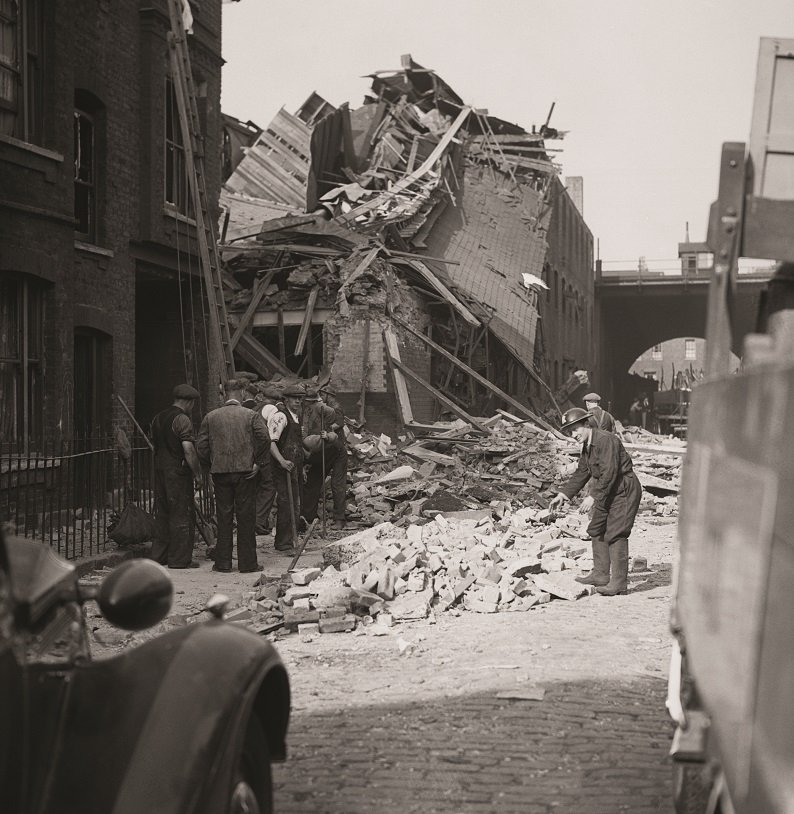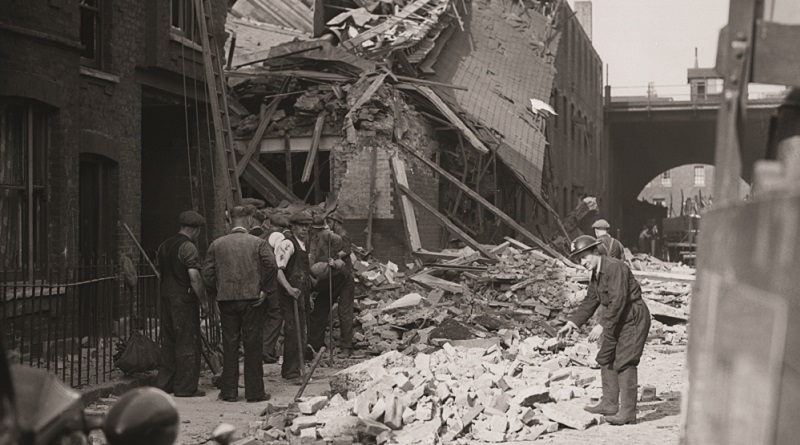Thousands were killed as London was Blitzed
The worst raid on London during the Blitz took place on the night of May 10, 1941.
It inflicted the highest number of casualties of any single night raid of the London Blitz, killing 1,436 Londoners and leaving more than 2,000 others seriously injured.
Destruction spread across the city with German bombers targeting all bridges west of Tower Bridge, factories south side of the river Thames and the railway line that ran north from Elephant and castle.
Originally, Hitler had begun bombing England in preparation for the German invasion.
Operation Sealion had been scheduled for September 11, 1940.

However, the RAF held its own against the Luftwaffe and the invasion was postponed indefinitely on September 17.
Nevertheless, Hitler continued with air raids to terrorize and demoralize the population.
In the first four months of the Blitz more than 13,000 were killed and tens of thousands wounded in London.
In retaliation for RAF bombings of Bremen, Hamburg, and Berlin earlier in the year, Hitler ordered a strike on London – 505 bombers flew to London on the night of May 10, snaking up the Thames.
The bombing lasted nearly seven hours, starting at 11pm and continuing until 5.50am the next morning. British anti-aircraft batteries and RAF night fighters managed to shoot down 33 planes.

Despite their best efforts, this night became one of the most destructive raids of the war.
The roof of the House of Commons burned and collapsed that night.
William Sansom, a volunteer fireman, recalled in his book, Westminster in War, 1947: “In the morning there was nothing left of the famous House but a charred, black, smouldering, steaming ruin.
“The ingenious, ingenuous, most typical gothic innovations of the old period had gone forever, and with them the Chamber, its Press Gallery, its Strangers’ and Ladies’ galleries.”

Westminster suffered badly that night, the larger incidents taking place at the District line Railway near Ebury Street, Hallam Street, the House of Commons, New Bond Street, the Queen’s Hall, St. Clement Danes, the Turner Buildings and Westminster Abbey.
Mr Sansom wrote: “It was noticeable in the morning air, an invisible veil of plaster-dust hung its odour over the air of every street, bombed or not bombed.”
Pictures: PA Images



